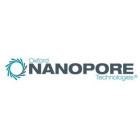Website nanoporetech.com Founded 2005 | ||
 | ||
Key people Hagan Bagley Clive G. Brown (CTO)Jim McDonald (CFO)John Milton (CSO)Gordon Sanghera (CEO)Spike Willcocks (VP) Profiles | ||
Oxford Nanopore Technologies Limited is a U.K.-based company which is developing and selling nanopore sequencing products (including the portable DNA sequencer, MinION) for the direct, electronic analysis of single molecules.
Contents
- Reading dna clive brown cto of oxford nanopore technologies
- History
- Products
- Internet of Living Things
- International Space Station Mission
- References
Reading dna clive brown cto of oxford nanopore technologies
History
The company was founded in 2005 as a spin-out from the University of Oxford by Hagan Bayley, Gordon Sanghera, and Spike Willcocks, with seed funding from the IP Group. As of 2014 the company had raised over £250 million in investment.
Products
The main products of Oxford Nanopore are:
These products are intended to be used for the analysis of DNA, RNA, proteins and small molecules with a range of applications in personalized medicine, crop science, and scientific research.
As of October 2016, over 3,000 MinIONs have been shipped. PromethION has started to ship in early access. GridION has not yet been brought to market. In a paper published in November 2014, one of the MAP participants wrote, "The MinION is an exciting step in a new direction for single-molecule sequencing, though it will require dramatic decreases in error rates before it lives up to its promise.". By August 2016, bioinformatician Jared Simpson noted that 99.96% consensus accuracy was generated using the nanopolish tool after raw accuracy had been improved with the new R9 nanopore.
In July 2015, a group published on nanopore sequencing of an influenza genome, noting “A complete influenza virus genome was obtained that shared greater than 99% identity with sequence data obtained from the Illumina Miseq and traditional Sanger-sequencing. The laboratory infrastructure and computing resources used to perform this experiment on the MinION nanopore sequencer would be available in most molecular laboratories around the world. Using this system, the concept of portability, and thus sequencing influenza viruses in the clinic or field is now tenable.“ In a paper and accompanying editorial published in October 2015, a group of MinION users wrote, “At the time of this writing, around a dozen reports have emerged recounting utility of the MinION for de novo sequencing of viral, bacterial, and eukaryotic genomes.”.
In March 2016 the Company announced a chemistry upgrade to ‘R9’, using the protein nanopore CsgG in collaboration with the lab of Han Remaut (VIB/Vrije Universiteit Brussel). The Company stated in a webcast that R9 is designed to improve error rates and yield. In late May 2016, the R9 nanopore was launched and users have reported high performance levels with the upgraded flow cells. Early reports on social media report high levels of '1D' accuracy (sequencing one strand of the duplex DNA), '2D' accuracy (sequencing both the template and complement strand) and assembled accuracy.
Internet of Living Things
Oxford Nanopore has worked to establish the concept of an 'Internet of Living Things', originally conceived as an 'Internet of DNA' by a bioinformatician based at UC Santa Cruz. In an article in Wired in 2015, Clive Brown, CTO of Oxford Nanopore noted that "future nanopore sensing devices linked to cloud based analyses could run anywhere on anything.".
The concept of an Internet of Living Things was referenced in a 2015 paper by Yaniv Erlich describing a future of ubiquitous genomics. Erlich noted that "multiple appliances could benefit from integration with sequencing sensors, including air conditioning or the main water supply to monitor harmful pathogens. However, of all possible options, toilets may offer the best integration point.”. For health-related applications he noted that "rapid sequencing at airport checkpoints might be useful to control pathogen outbreaks and offer medical assistance to affected passengers. Similarly, a portable sequencer will enable physicians to provide more accurate diagnoses in the field during humanitarian crises or in the clinic without the need to waste time by sending samples to a lab.”
International Space Station Mission
In July 2016, a MiniON nanopore sequencer was included on the ninth NASA/SpaceX commercial cargo resupply services mission to the International Space Station. The aim of the mission is to provide proof of concept for the MiniON’s functionality in a microgravity environment and then explore further uses onboard. It has been suggested that the ability to execute DNA sequencing in space will allow monitoring of changes in microbes in the environment or humans in response to spaceflight, and possibly aid in the detection of DNA-based life elsewhere in the universe.
During the mission, ISS crew members successfully sequenced DNA from bacteria, bacteriophage and rodents from samples prepared on Earth. Researchers on Earth performed synchronous ground controls to evaluate how well the MiniON works in the difficult conditions. Additionally, maintaining the MiniON device as a research facility on the space station holds the potential to support a number of additional science investigations, any of which could have Earth based applications.
